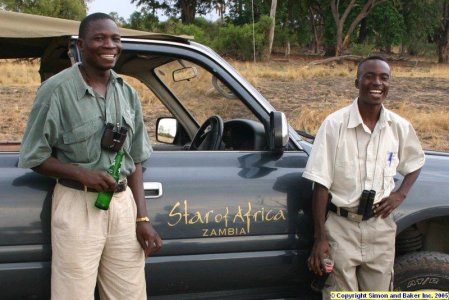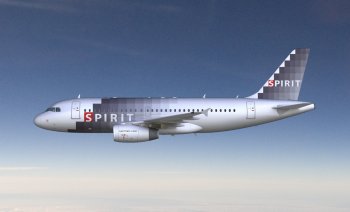by Editor | Jun 17, 2006 | Luxury Travel

Minneapolis, MN (PRWEB) — A recent poll by Airlines.Ws of 1067 highly targeted airline passenger based readers revealed 67 percent thought cell phones should remain banned during flight. The remaining 33 percent said no. The polling lasted 45 days.
Cell phones are already banned during take offs and landings because of the possible risks associated with the radio interference of cell phones as well as other devices such as pagers, Palm Pilots, Blackberries, CD, MP3 players and laptops emitting RF signals.
“The risk posed by these portable devices is higher than previously believed. Radio frequency emitted from these devices can disrupt normal operation of key cockpit instruments, especially Global Positioning System (GPS) receivers, which are increasingly vital for safe landings,”, said Bill Strauss, one of the researchers of a February 2006 Carnegie Mellon University (CMU) study .
According to Airlines.Ws there is documentation which shows the possibility that cell phone interference resulted in the death of 10 passenger and crew members onboard a Crossair flight near Zurich, Switzerland in January 2000. Investigators found false readings given by aircraft instrumentation were later traced to the exact time of a text message received by a passenger.
The Radio Technical Commission for Aeronautics (RTCA) conducting PED studies since 1963, states cell phones “should be viewed as potentially hazardous and an unacceptable risk.” As of June 2005, “the FAA remains unconvinced that aircraft communication and navigation equipment can be adequately protected from onboard interference,” said Nicholas Sabatini, Associate Administrator for Aviation Safety, Federal Aviation Administration (FAA).
Before any change allowing cell phones in-flight the FAA and Federal Communication Commission (FCC) would need to lift their bans. The FCC has already voiced their opinion that they intend to lift their ban. The FAA is still studying the issue and doesn’t expect to have those results until the end of 2006.
While this polling was based on a safety issue, Airlines.Ws received more emails from respondents far more concerned over how disruptive cell phone conversations would be for themselves and other passengers than they were about any safety issue. Airlines.Ws is a directory of airlines, airline news, polls and commentary.
by Editor | Jun 12, 2006 | Accomodations, Luxury Travel, New Articles

Wild dogs at Eagles Crag at the Shamwari Game Reserve, South Africa
San Francisco, California – According to an Opinion Research Corporation national survey sponsored by the Adventure Collection, nearly 10 percent of respondents say they spend $5,000 or more on their adventure travel vacations. In addition, the survey found that 3 percent spent $9,000 or more. Among those with household incomes above $75,000, 17 percent said they spent $5,000 or more on their adventure travel vacations.
While age is not a factor in adventure travel, the Opinion Research survey confirmed that older travelers’ (65+) participation rate is significantly lower (32 percent), but they spend more money on their adventure vacation. And those adventure vacationers over age 35 spend significantly more than those under 35 years of age, although, 18-24 year olds have the highest participation in adventure travel activities at 53 percent.
The survey also found that of the geographic areas evaluated, the West (51 percent) has the highest level of participation in adventure travel followed by the Northeast at 48 percent, the North Central at 45 percent and the South at 41 percent.
“The findings on the adventure traveler were not surprising. It has been our experience, and the survey confirms, the higher one’s income and the more education one has, the more they spend on adventure travel,” said Ben Bressler, president of Adventure Collection member company Natural Habitat Adventures.
Formed in 2000, Adventure Collection comprises 11 independently owned active travel companies that came together through “a shared commitment to operating trips based on quality, experience, environmental responsibility and sustainable tourism.”
To read about ecotourism and adveture articles, visit our Botswana, Peruvian Amazon, http://simonandbaker.com/kruger, Shamwari and Zambia pages.
by Editor | May 30, 2006 | Ecotourism, Luxury Travel
by Auliana Poon, Ph.D.
Managing Director and Senior Partner Tourism Intelligence International

Auliana Poon, Ph.D.
Warm weather, spectacular scenery, secluded beaches, accessible wildlife, cultural attractions, a wide range of quality accommodation and good value for money: just some of the ingredients that make a successful tourism destination. Other man-made factors – safety and security, a warm welcome and good service – are also vital.
Indeed, successful destinations are those where visitors feel a complete sense of welcome – where the locals that smile are not only those paid to do so. Yet, so little energy is spent on creating the reasons for locals to smile. Much of the effort of tourist authorities goes into awareness and “smile training”. They do not realise that unless local people feel tourism in their pockets and on their tables, all the smile training will not help. It is not surprising that when a journalist asked a Johannesburg resident why he stole a handbag from a tourist, he replied: “They say we should benefit from tourism, so I am just benefiting.”
According to Sabelo Mahlalela, head of Mpumalanga Tourism Development in South Africa, “you do not teach people to eat; you just give them the food”. Similarly, you do not teach locals to smile at tourists, you give them the reason to do so!
There is a belief that responsibility for involving local communities in tourism lies with the government. Many private operators give little thought to the relationship they should be building with their neighbours. Yet, they expect their guests to be safe, with everyone smiling at them. The evidence suggests that far-sighted entrepreneurs, who build up local links, are most successful. A good example of this is Umngazi River Bungalows in Eastern Cape, South Africa. This facility has an annual average occupancy rate of about 85% – one of the highest in the country.
The management has taken decisions designed to ensure happy workers and a happy community. All staff are drawn from the surrounding communities, workers get a 13th month’s salary and share in the annual profits, the hotel has helped financially with the building of a local school, it provides free space for locals to sell their crafts to tourists, and it is committed to buying produce locally. Every morning sees a procession of people arriving at the hotel with baskets on their heads. Continuous training and skills upgrading is also provided. Not surprisingly, the staff and community are content and a safe and happy environment is created for visitors. There is no staff turnover and 70% of Umngazi’s guests are repeat visitors. This all translates into a better bottom line.
The management has a number of other ideas. It would like to support a community entrepreneur to develop a piggery (the kitchen waste makes good fodder). It aims to encourage a campsite development where one family would be responsible for taking care of each unit. Umngazi would supply the fresh water and assist with reservations. And it foresees a cultural village where guests can learn about the local culture first hand. These are the types of initiative that sustainable, responsible tourism is made of.
Missing ingredient
Involving local people is surely one of the missing ingredients undermining the success of many tourist destinations. In South Africa, where there is an urgent need to involve previously disadvantaged communities, many initiatives have not, unfortunately, brought in the private sector. NGOs and donor agencies have tried to work with local people, identifying their needs and supplying them with what they want. But without private sector input, the sustainability of these supply-based initiatives is questionable. Associating the private sector is one of the keys to unlocking the potential of local communities in the tourism industry. It may be a good idea to set up a craft village, but if you involve an established tour operator in the project, you can help ensure that the products suit the needs of the market, that the centre is in an optimal location, that it has the services guests are looking for, and that tour buses will stop to enable visitors to make a purchase. Where hoteliers “buy-in” to a community project (such as horse riding), this can go a long way to ensuring its success (the hotel then advertises the attraction to its guests).
There are a number of unexplored ways in which the private sector can support community involvement in tourism. These include: advertising community products and services; sourcing goods and services from the community (e.g. eggs, bread); providing training and “mentoring” for small businesses that supply the hotel; out-sourcing certain services (laundry, gardening, water sports); employing persons (e.g. nannies) as free agents, to build entrepreneurship; ensuring that community services are employed in building and construction; training and skills upgrading; employing people from surrounding communities; identifying key opportunities for local producers (e.g. fresh herbs, organic vegetables); introducing new services to guests (e.g. cooking classes for the preparation of local food, local language training, story-telling, traditional games, catch and release fishing, and offering local cuisine on the menu); identifying career opportunities for locals; encouraging staff and local schools to experience being a tourist at the hotel.
The key approach to local involvement in tourism should not be aid, but private sector development in the relevant communities. In other words, to paraphrase a well-worn saying, “don’t give people fish but teach them how to fish.” The future of tourism in South Africa and indeed, elsewhere in the world, will be more secure when the Umngazi experience ceases to be just a “good example”, and becomes “best practice.”
Auliana Poon, Ph.D. is an international tourism consultant, specializing in eco-tourism and sustainable tourism development.
by Editor | May 22, 2006 | Luxury Travel

Sussi guides Mwila and Sandy
Chester and Joni visited Zambia late last year and came back with photos and fables of this little known African game viewing destination. To read all about it go to Chichele Presidential Lodge, Puku Ridge Tented Camp and Sussi Lodge
by Editor | Feb 15, 2006 | Luxury Travel

Spirit Airbus A319
Photos: Spirit Airlines
Fort Lauderdale, Florida – Spirit Airlines launched new daily non-stop service from San Francisco International Airport to Detroit Metro with connecting service to Atlantic City, Cancun, Fort Myers, New York’s LaGuardia Airport, Orlando and Myrtle Beach, S.C. Service will begin on May 25, 2006.
These new flights will be served with Spirit Airbus A319 aircraft holding 138 passengers with eight in Spirit Plus, Business Class and 130 in coach. Spirit will complete its transition to an all new Airbus fleet by this fall.

Barry Biffle, chief marketing officer, Spirit Airlines
“We are thrilled to add the premier San Francisco area airport to our route map this summer,” said Barry Biffle, chief marketing officer of Spirit Airlines. “Customers have been clamoring for service to the City by the Bay and we are delighted to satisfy those cravings for sourdough, chocolate, and trolley cars for less. Providing low fares, great service and brand new planes isn’t virgin territory for Spirit. San Francisco will be our 29th city and we see blue skies ahead for a great start of service this May.”
“We are extremely pleased that Spirit Airlines has selected San Francisco International Airport,” said John L. Martin, airport director, San Francisco International Airport. “Spirit Airlines has already developed a reputation for high value, low-cost service and its addition to SFO will mean even more choices for our passengers, which also means more competitive fares for our travelers. We look forward to working with the Spirit Airlines team as they begin their operations in San Francisco.”
Fort Lauderdale-based Spirit Airlines is a low fare carrier to the Caribbean with hubs in Detroit and in Fort Lauderdale and service to 29 cities in the United States, Bahamas, and the Caribbean. In addition to Coach class service, Spirit offers Spirit Plus business class with 2-by-2 leather seats with an extra six inches of legroom in the new Airbus fleet, complimentary cocktails and snacks. For more information, fares, schedules and reservations call 1-800-772-7117 (en espanol, 1-800-756-7117) or visit SpiritAir.com . For information on San Francisco attractions read the Simon & Baker Travel Review San Francisco articles.
by Editor | Jan 26, 2006 | Luxury Travel

Tru spa waterfall
Photo: Tru
San Francisco, California — Tru spa introduced the Pair’s Polish, a romantic treatment for couples which takes place inside the facility’s Tropical Rainforest Room, where couples exfoliate with fresh fruit pulps and essential oils and then are immersed under tropical "rain," followed by a refreshing "waterfall" rinse.
Pairs Polish enables lovebirds to rub each other down with a sugar based exfoliating and brightening scrub of fresh strawberries, almonds and honey. Couples use the hand shower to rinse, then massage on a strawberry cream, and honey mixture. They are showered by hot "jungle mist," followed by warm "tropical rain" and a romantic trip to the bottom of a private "waterfall." The cost of this treatment is $200 per couple for 55 minutes.
Tru, an independently owned and operated modern day spa located in downtown San Francisco, offers facials, massage, nail services, waxing, microdermabrasion, skin peels, scrubs, and custom water treatments. There are eleven treatment rooms; five with computer controlled "colorblast" lighting to combine colored light therapy with massage. For additional information read our article about Tru















